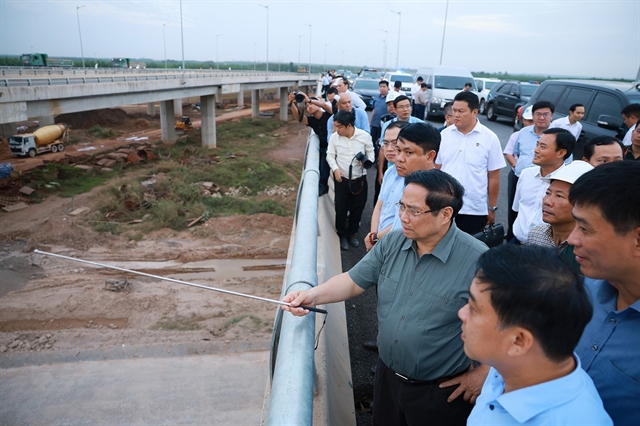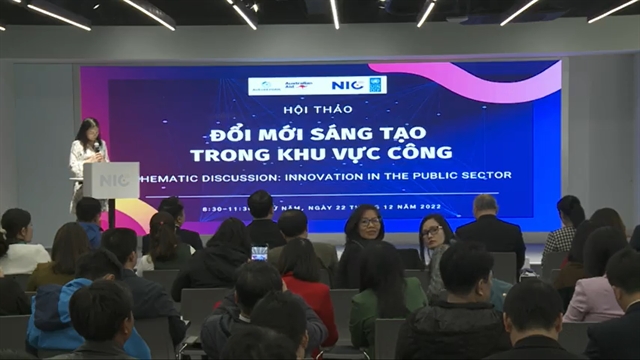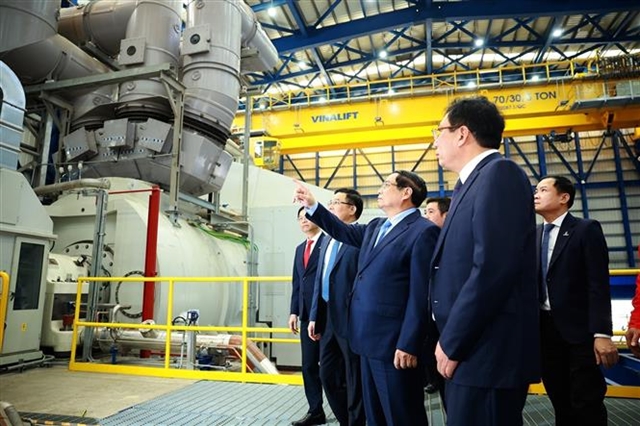 Society
Society


|
| The discussion in Hà Nội on Thursday morning. — VNS Photo Anh Đức |
HÀ NỘI — Testing the innovation criteria and framework in public sector affairs will help build an innovative public sector suitable for the rapid development of innovation in Việt Nam.
The information was discussed at a seminar titled "Thematic discussion: Innovation in the public sector" on Thursday in Hà Nội.
According to the National Innovation Center (NIC), the innovation ecosystem in Việt Nam has begun to form and achieved positive results in recent times, especially in the private sector. However, in order to build a sustainable and synchronous innovation ecosystem, international experience shows that the involvement of the public sector is the key factor in creating an effective innovation ecosystem.
According to Võ Xuân Hoài, Deputy Director of the NIC, innovation becomes important when traditional approaches cannot solve complex and intractable problems facing society. A number of industries such as finance, transportation and tourism have promoted digital transformation.
However, human resources for digital transformation are still lacking, especially in the public sector when the quality of training is uneven, facilities still lack equipment and training methods are not up to international standards.
“Especially, the awareness of civil servants in public administrative units is still limited, the source of income and salaries of officials and employees are still low compared to countries with digitalised public administration and the rate of use of public administration is still low. The use of cash is still popular, which can lead to corruption and budget waste," said Hoài.
Therefore, after in-depth research and consultation based on international and domestic experiences, realising the significance of the need for a framework of criteria for evaluating innovation in the public sector, NIC coordinated with the United Nations Development Program (UNDP) in Việt Nam to develop a pilot framework for evaluating innovation in the public sector in Việt Nam.
This research project is part of the Innovation for People Initiative (CPII) under the Provincial Governance and Public Administration Performance Index (PAPI) research programme, with major funding coming from the Ministry of Industry and Trade and Foreign Affairs and Trade Australia (DFAT).
According to Vũ Quốc Huy, Director of NIC, the pilot framework of innovation criteria in the public sector was developed to provide an important overview of the concept formation and measurement of innovation and innovation capacity. At the same time, the testing of the criteria framework helps public sector units to clearly see their innovation level and motivation.
Initial results collected from pilot surveys have shown some encouraging signs.
Firstly, about 36 per cent of the respondents of the Ministry of Planning and Investment survey and 27 per cent of the respondents in three provinces think that their units have innovated products and services in the past two years.
Secondly, the percentage of human resources that meet the requirements of proposing and implementing innovation is quite high.
Thirdly, more than 50 per cent of surveyed individuals rated the innovation process and procedures as quick and flexible.
Fourthly, about 68.2 per cent of respondents at ministerial-level units and 35.7 per cent of individuals at provincial-level units said that their units already have innovation strategies, mainly strategic ones.
However, according to NIC, innovation activities in the public sector still have limitations and constraints such as provincial units having less funds, more financial difficulties for innovation and receiving less support.
According to Vũ Đăng Minh, Chief of Office of the Ministry of Home Affairs, the Government has promulgated the State Administration Reform Master Programme for the 2021-2030 period with six contents, including institutional reform, administrative reform, organisational reform of the state administrative apparatus, reform of the civil service regime, public finance reform and development of e-government and digital government.
In which, according to Minh, the measurement index framework must focus on assessing the level of creativity in institutional reform, organisational reform of the state administrative apparatus; reform of the civil service regime; and public finance reform. In particular, it is necessary to calculate the weights of the criteria according to the public administration sector and public career.
He noted that while the public administration sector has a higher compliance principle, the public sector is more open and has room for innovation. — VNS




